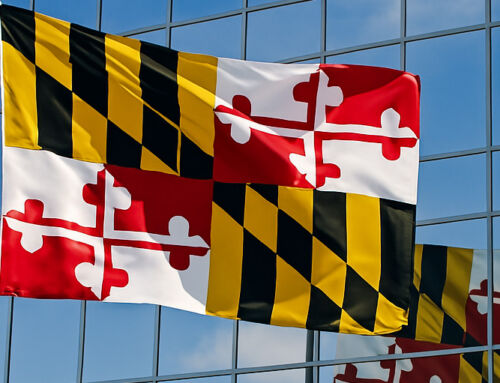View by Topic
Recent Articles
-
Migratory Bird Treaty Act Does Not Prohibit Incidental Take – AgainSaturday, April 19th, 2025
-
President Trump’s Bold Step to Rein in State Overreach in Climate ChangeSaturday, April 12th, 2025
-
Mandatory GHG Disclosures in Maryland Real Estate ContractsSaturday, April 5th, 2025
-
NYC Building Electrification Ruling is Interesting But Not a Game ChangerSaturday, March 29th, 2025
-
Greenpeace Ordered to Pay $667M in Blow to ActivismSaturday, March 22nd, 2025
View by Month/Year
“Green Building Law Update” Headlines
Recent Articles & News from
Stuart Kaplow’s blog
at GreenBuildingLawUpdate.com
- President Trump’s Bold Step to Rein in State Overreach in Climate Change April 13, 2025
- Mandatory GHG Disclosures in Maryland Real Estate Contracts April 6, 2025
- NYC Building Electrification Ruling is Interesting But Not a Game Changer March 30, 2025
- Greenpeace Ordered to Pay $667M in Legal Blow to Environmental Activism March 23, 2025
Subscribe to the Green Building Law Update!
Stuart Kaplow brings his expertise and extensive experience to the table with his unique digital publication, "Green Building Law Update". Subscribers receive regular updates to keep them informed about important issues surrounding Environmental Law, Green Building & Real Estate Law, as well as the emerging demand for Environmental Social Governance (ESG).
Get fresh content through the lense of Stuart Kaplow's cutting-edge expertise, innovative commentary and insider perspective. Don't miss another issue! Subscribe below.

Supreme Court to Hear Climate Change Regulation Case
If there was any question that the judiciary was a coequal and political branch of government, last Friday after President Biden was wheels up to attend the COP26 Glasgow climate conference, the Supreme Court agreed to review the Environmental Protections Agency’s authority to regulate greenhouse gas emissions.
This litigation over the EPA’s scope of authority comes to the high court in a quartet of environmental cases on appeal from the U.S. Court of Appeals for the District of Columbia Circuit. In January, the day before President Trump left office, the D.C. Circuit vacated both the Trump Administration’s decision to repeal the 2015 Clean Power Plan, which established guidelines for states to limit carbon dioxide emissions from power plants, and the Affordable Clean Energy Rule that the Trump administration issued in its place.
The Supreme Court never had the opportunity to fully consider the Obama administration rules, the implementation of which had been stayed, and then the complexion of the judicial review swung widely from the Trump administration to the Biden administration.
The precise issue the Supremes granted certiorari on is, “Whether, in 42 U.S.C. § 7411(d), an ancillary provision of the Clean Air Act, Congress constitutionally authorized the Environmental Protection Agency to issue significant rules — including those capable of reshaping the nation’s electricity grids and unilaterally decarbonizing virtually any sector of the economy — without any limits on what the agency can require so long as it considers cost, nonair impacts and energy requirements.”
Urging the justices to take the case, one of the challengers, the North American Coal Corporation, stressed what the Court should resolve, “as soon as possible is who has the authority to decide those issues on an industry-wide scale — Congress or the EPA.” Unless the justices weigh in, the company warned, “these crucial decisions will be made by unelected agency officials without statutory authority, as opposed to our elected legislators.”
The Biden administration told the justices that there was no need for them to step in now, because the Clean Power Plan “is no longer in effect and EPA does not intend to resurrect it.” Instead, the government explained, it intends to issue a new rule that takes recent changes in the electricity sector into account. “Any further judicial clarification of the scope of EPA’s authority,” the government suggested, “would more appropriately occur” after the agency has actually issued the new rule.
After considering the cases at four consecutive conferences, with some political bravado the justices granted review on October 29, 2021, only hours before the opening of the COP26 Glasgow climate conference and ordered the cases to be argued together.
With the current conservative high court, the decision in the case, which is expected in summer 2022, will all but certainly hold that the Clean Air Act does not give EPA broad authority to regulate greenhouse gas emissions, but the larger question will be if the decision will be broad enough to have impact well beyond climate change and impose new limits on the authority of other regulatory agencies.
We will follow the proceedings, ..
The lead case is West Virginia v. EPA. It is consolidated with North American Coal Corp. v. EPA, Westmoreland Mining Holdings v. EPA, and North Dakota v. EPA.









